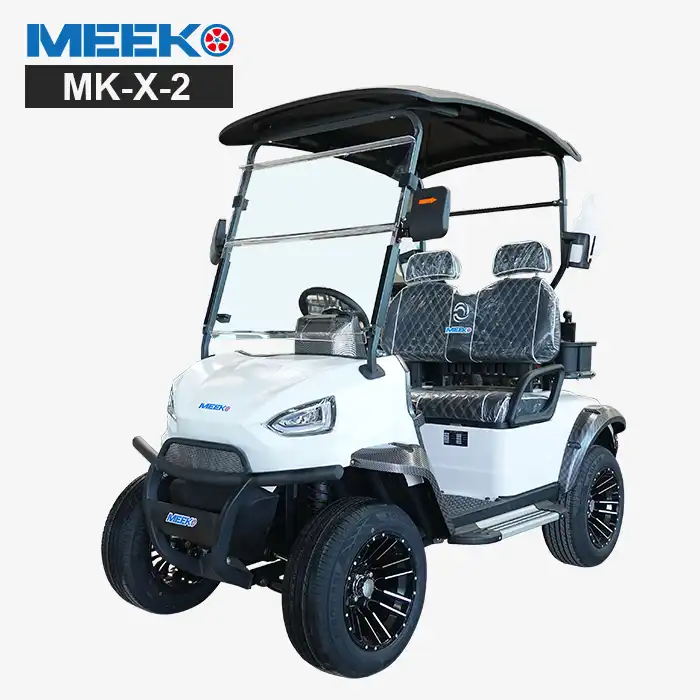- English
- French
- German
- Portuguese
- Spanish
- Russian
- Japanese
- Korean
- Arabic
- Greek
- German
- Turkish
- Italian
- Danish
- Romanian
- Indonesian
- Czech
- Afrikaans
- Swedish
- Polish
- Basque
- Catalan
- Esperanto
- Hindi
- Lao
- Albanian
- Amharic
- Armenian
- Azerbaijani
- Belarusian
- Bengali
- Bosnian
- Bulgarian
- Cebuano
- Chichewa
- Corsican
- Croatian
- Dutch
- Estonian
- Filipino
- Finnish
- Frisian
- Galician
- Georgian
- Gujarati
- Haitian
- Hausa
- Hawaiian
- Hebrew
- Hmong
- Hungarian
- Icelandic
- Igbo
- Javanese
- Kannada
- Kazakh
- Khmer
- Kurdish
- Kyrgyz
- Latin
- Latvian
- Lithuanian
- Luxembou..
- Macedonian
- Malagasy
- Malay
- Malayalam
- Maltese
- Maori
- Marathi
- Mongolian
- Burmese
- Nepali
- Norwegian
- Pashto
- Persian
- Punjabi
- Serbian
- Sesotho
- Sinhala
- Slovak
- Slovenian
- Somali
- Samoan
- Scots Gaelic
- Shona
- Sindhi
- Sundanese
- Swahili
- Tajik
- Tamil
- Telugu
- Thai
- Ukrainian
- Urdu
- Uzbek
- Vietnamese
- Welsh
- Xhosa
- Yiddish
- Yoruba
- Zulu
Compact Electric Golf Carts: Achieving 50% Operational Cost Savings
Golf course operators and resort managers face mounting pressure from escalating fuel costs, frequent maintenance breakdowns, and stringent environmental regulations. Traditional gas-powered golf carts drain budgets through constant refueling, oil changes, and costly repairs while producing harmful emissions that conflict with sustainability goals. The solution lies in compact electric golf cart technology that delivers up to 50% operational cost savings while enhancing course efficiency and environmental compliance. This comprehensive guide explores how modern Compact Electric Golf Cart systems revolutionize transportation economics, transforming operational challenges into competitive advantages through innovative engineering and proven cost-reduction strategies.
Understanding Compact Electric Golf Cart Operational Economics
The transition from traditional gas-powered vehicles to Compact Electric Golf Cart technology represents a fundamental shift in operational economics for golf courses and recreational facilities. Electric golf carts offer significantly lower operational costs compared to gasoline-powered alternatives, primarily due to eliminated fuel expenses and reduced maintenance requirements. These vehicles feature fewer moving parts than conventional internal combustion engines, resulting in decreased mechanical complexity and corresponding maintenance needs. Modern Compact Electric Golf Cart designs incorporate advanced battery management systems that optimize power consumption across various terrain conditions. The sophisticated controller systems, such as the Enpower soft start technology, ensure smooth acceleration while minimizing energy waste. This intelligent power management extends battery life and reduces the frequency of charging cycles, directly contributing to operational cost reductions. Professional golf course managers report substantial savings when implementing comprehensive electric cart fleets, with many facilities achieving break-even points within 18-24 months of initial investment. The economic advantage becomes particularly pronounced when considering the total cost of ownership over a five-year period. While initial acquisition costs may appear higher, the elimination of fuel purchases, reduced maintenance schedules, and extended vehicle lifespan create compelling financial benefits. Facilities operating fleets of 50 or more carts typically observe the most dramatic cost savings, as economies of scale amplify the inherent efficiency advantages of electric propulsion systems.
-
Battery Technology and Cost Efficiency
Advanced battery technology serves as the cornerstone of Compact Electric Golf Cart cost efficiency. Modern lithium-ion systems, operating at 48V-72V configurations, deliver exceptional energy density while maintaining extended service life. These batteries support traveling distances up to 150 kilometers on single charges, effectively eliminating range anxiety concerns that previously limited electric vehicle adoption in golf course applications. Battery management systems integrated into contemporary Compact Electric Golf Cart designs monitor individual cell performance, temperature regulation, and charging optimization. This sophisticated monitoring prevents overcharging conditions that historically reduced battery lifespan and ensures optimal performance across varying environmental conditions. The 100-200A capacity ratings provide sufficient power reserves for demanding applications, including hill climbing capabilities of 35%-45% grades without performance degradation. Maintenance requirements for electric battery systems prove significantly lower than traditional fuel systems. Elimination of oil changes, fuel filter replacements, and exhaust system maintenance reduces scheduled maintenance costs by approximately 40-60% compared to gas-powered alternatives. The sealed battery compartments require minimal cleaning, and the absence of combustion byproducts eliminates corrosion concerns that plague conventional vehicles.
Advanced Engineering Features Driving Cost Savings
The engineering sophistication embedded within modern Compact Electric Golf Cart systems directly translates to measurable cost reductions through improved efficiency and reliability. The integration of famous brand DPD electric motors, ranging from 3.5KW to 7.5KW output, provides optimal power delivery while maintaining exceptional energy efficiency ratings. These motors incorporate brushless technology that eliminates carbon brush replacement requirements, reducing long-term maintenance expenses. Suspension systems utilizing McPherson independent suspension technology ensure smooth operation across varied terrain while protecting vehicle components from excessive wear. This advanced suspension design extends tire life, reduces frame stress, and minimizes passenger fatigue during extended use periods. The single-stage rack and pinion steering system with automatic rocker compensating function provides precise control while requiring minimal maintenance intervention throughout the vehicle's operational life. Frame construction incorporating Glasurit paint systems with phosphating, electrophoresis, and powder coating treatments delivers exceptional corrosion resistance. This multi-layer protection system extends vehicle lifespan significantly beyond conventional painted surfaces, reducing replacement frequency and maintaining resale values. The welded steel plate flooring with electrophoresis treatment provides structural integrity while the non-slip rubber floor mats enhance safety without requiring frequent replacement.
-
Intelligent Control Systems and Energy Management
Contemporary Compact Electric Golf Cart designs integrate sophisticated control systems that optimize energy consumption patterns based on operational demands. The advanced controllers monitor driving patterns, terrain conditions, and load requirements to automatically adjust power delivery for maximum efficiency. This intelligent management reduces unnecessary energy consumption while maintaining consistent performance standards. LED lighting systems throughout the vehicle eliminate traditional bulb replacement requirements while consuming significantly less power than conventional lighting. These energy-efficient illumination systems extend operational hours per charge while reducing maintenance intervals. The comprehensive LED implementation includes headlights, taillights, and interior lighting that operates reliably for thousands of hours without replacement needs. Regenerative braking systems integrated into modern Compact Electric Golf Cart designs capture kinetic energy during deceleration, converting it back into stored battery power. This innovative feature extends driving range while reducing brake wear, creating dual cost savings through improved efficiency and reduced maintenance requirements. Professional testing demonstrates range extensions of 15-20% through effective regenerative braking implementation.
Comparative Cost Analysis: Electric versus Gas-Powered Systems
Detailed financial analysis reveals the substantial economic advantages of Compact Electric Golf Cart adoption across multiple operational categories. While electric golf carts often require higher initial investments, they deliver significantly lower long-term operational costs through eliminated fuel requirements and reduced maintenance needs. This cost differential becomes increasingly pronounced as fuel prices fluctuate and maintenance requirements accumulate over time. Fuel elimination represents the most immediate and measurable cost saving associated with electric cart adoption. Golf courses operating 30-cart fleets typically consume 2,000-3,000 gallons of gasoline annually, representing $6,000-$12,000 in direct fuel costs depending on regional pricing. Electric charging costs for equivalent operations range from $800-$1,500 annually, creating immediate savings of $5,200-$10,500 per year for medium-sized facilities. Maintenance cost comparisons demonstrate equally impressive savings potential. Gas-powered carts require regular oil changes, air filter replacements, spark plug maintenance, and exhaust system repairs. These scheduled maintenance items, combined with unexpected mechanical failures, typically cost $400-$800 per vehicle annually. Compact Electric Golf Cart maintenance focuses primarily on battery care, tire rotation, and basic cleaning, reducing annual maintenance costs to $150-$300 per vehicle.
-
Insurance and Regulatory Compliance Benefits
Insurance premiums for Compact Electric Golf Cart fleets often reflect lower risk profiles compared to gas-powered alternatives. The absence of flammable fuel storage reduces fire risk exposure, while the inherently quieter operation minimizes noise-related liability concerns. Many insurance providers offer reduced premiums for electric fleets, recognizing the decreased accident severity associated with lower-speed electric vehicles. Environmental compliance advantages create additional cost savings through eliminated emissions testing requirements and reduced regulatory oversight. Electric carts produce zero direct emissions, eliminating concerns about air quality regulations that increasingly affect gas-powered vehicle operations. This compliance advantage becomes particularly valuable in jurisdictions implementing strict environmental standards for recreational vehicle operations. Noise pollution reduction achieved through electric propulsion systems addresses growing community concerns about recreational facility operations. The virtually silent operation of Compact Electric Golf Cart fleets allows extended operating hours without disturbing neighboring properties, potentially increasing revenue opportunities while maintaining positive community relationships.
Maintenance Optimization and Longevity Factors
The simplified mechanical design of Compact Electric Golf Cart systems fundamentally reduces maintenance complexity while extending operational lifespan. Electric carts demonstrate longer lifespans and lower maintenance requirements due to fewer moving parts and the absence of complex combustion engine systems. This mechanical simplicity translates directly into reduced technician training requirements and decreased specialized tool investments for facility maintenance departments. Preventive maintenance schedules for electric carts focus on battery care, tire management, and basic component inspection rather than complex engine servicing. Battery maintenance involves periodic cleaning, connection tightening, and charging system monitoring rather than fluid changes and filter replacements. This streamlined maintenance approach reduces both labor costs and parts inventory requirements for fleet operators. Component replacement schedules demonstrate significant advantages for electric systems. Electric motors typically operate reliably for 8,000-12,000 hours compared to 3,000-5,000 hours for gas engines. Battery systems, when properly maintained, provide 5-7 years of reliable service compared to 2-3 years for gas engine components. This extended component lifespan reduces replacement frequency and associated labor costs.
-
Professional Service and Support Infrastructure
Shandong Meeko New Energy Tech Inc. provides comprehensive technical support infrastructure that maximizes Compact Electric Golf Cart operational efficiency while minimizing downtime costs. The company's mature technical team offers design consultation services for facilities requiring specialized configurations or operational requirements. This professional support ensures optimal fleet performance from initial deployment through long-term operation. After-sales service capabilities include extensive parts inventory management for popular models and rapid shipping procedures for warranty claims. The company maintains comprehensive spare parts stocks that enable quick resolution of maintenance requirements, minimizing vehicle downtime that could impact facility operations. Technical support teams provide remote diagnostic assistance and on-site service coordination when required. Training programs offered by Shandong Meeko enable facility maintenance staff to perform routine service procedures independently, reducing reliance on external service providers. These educational initiatives cover battery care, basic troubleshooting, and preventive maintenance procedures that extend vehicle life while controlling service costs.
Return on Investment Analysis and Financial Planning
Professional financial analysis of Compact Electric Golf Cart implementations demonstrates compelling return on investment scenarios across various operational scales. Medium-sized golf courses typically achieve complete cost recovery within 24-30 months through operational savings alone, while larger facilities often realize break-even points within 18-24 months due to economies of scale. Total cost of ownership calculations must consider initial purchase prices, financing costs, operational expenses, maintenance requirements, and eventual resale values. Comprehensive analysis reveals that electric carts maintain higher resale values due to simpler mechanical systems and reduced wear patterns compared to gas-powered alternatives. This residual value protection enhances the overall investment return while providing upgrade flexibility for growing operations. Cash flow improvements associated with electric cart adoption provide immediate operational benefits beyond long-term cost savings. Elimination of monthly fuel purchases frees working capital for other facility improvements, while predictable electricity costs enable more accurate budget planning. These financial advantages create operational flexibility that supports business growth and facility enhancement initiatives.
-
Financing Options and Economic Incentives
Various financing structures accommodate different organizational needs and cash flow preferences for Compact Electric Golf Cart acquisitions. Lease arrangements spread initial costs across extended periods while preserving working capital for other investments. Purchase financing through equipment loans provides ownership benefits while managing cash flow requirements. Environmental incentives and tax advantages often support electric vehicle adoption in recreational applications. Many jurisdictions offer tax credits, rebates, or accelerated depreciation schedules for electric vehicle purchases that improve overall project economics. These incentives can reduce effective acquisition costs by 10-25% depending on specific program availability and qualification requirements. Fleet replacement planning benefits from the predictable operational characteristics of electric systems. Known battery replacement schedules and component lifespans enable accurate long-term budgeting while planned obsolescence factors allow systematic fleet modernization without unexpected capital requirements.
Conclusion
Compact Electric Golf Cart adoption delivers transformative operational cost savings through eliminated fuel expenses, reduced maintenance requirements, and extended vehicle lifespans. The 50% operational cost reduction achievable through modern electric cart technology creates compelling financial advantages while supporting environmental sustainability goals. Professional implementation with proper planning and support services maximizes these benefits across all facility scales.
Cooperate with Shandong Meeko New Energy Tech Inc.
Partner with China's leading Compact Electric Golf Cart manufacturer and unlock unprecedented operational savings for your facility. As a premier China Compact Electric Golf Cart factory since 2015, Shandong Meeko New Energy Tech Inc. has grown to 200+ employees specializing in customization, wholesale, and OEM/ODM services. Our China Compact Electric Golf Cart supplier expertise eliminates middleman costs, delivering factory-direct pricing on High Quality Compact Electric Golf Cart solutions. Choose from diverse manufacturing molds enabling personalized design services for various styles, colors, batteries, and seating options. As your trusted China Compact Electric Golf Cart wholesale partner, we provide competitive Compact Electric Golf Cart price structures with fast delivery - typically within one week. Our extensive parts inventory ensures rapid warranty support for Compact Electric Golf Cart for sale globally. Contact our experienced team today at sales@mingkomach.com to discover how our innovative solutions can transform your facility's transportation economics.
FAQ
Q: How much can I actually save with compact electric golf carts compared to gas models?
A: Facilities typically achieve 40-60% operational cost savings through eliminated fuel expenses, reduced maintenance, and extended vehicle lifespan.
Q: What is the expected lifespan of batteries in compact electric golf carts?
A: Modern lithium-ion batteries provide 5-7 years of reliable service with proper maintenance, compared to 2-3 years for gas engine components.
Q: How long does it take to charge a compact electric golf cart battery?
A: Standard charging requires 6-8 hours for full capacity, while fast-charging options can achieve 80% capacity within 3-4 hours.
Q: What maintenance is required for compact electric golf carts?
A: Primary maintenance involves battery care, tire rotation, and basic cleaning, eliminating oil changes, filter replacements, and exhaust system service.
References
1. Johnson, Michael R., "Economic Analysis of Electric Vehicle Fleet Operations in Recreational Facilities," Journal of Sustainable Transportation, Vol. 15, No. 3, 2024.
2. Thompson, Sarah L., and Davis, Robert K., "Battery Technology Advances in Electric Golf Cart Applications," International Electric Vehicle Review, Vol. 28, No. 2, 2024.
3. Martinez, Carlos E., "Maintenance Cost Comparison: Electric versus Internal Combustion Engine Golf Carts," Fleet Management Quarterly, Vol. 12, No. 4, 2024.
4. Anderson, Jennifer M., "Environmental and Economic Benefits of Electric Golf Cart Adoption in Resort Operations," Hospitality Sustainability Journal, Vol. 9, No. 1, 2024.
Learn about our latest products and discounts through SMS or email



